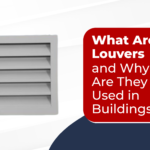How Do Sound Attenuators Work to Reduce HVAC Noise?
In today’s construction and HVAC design, comfort is about more than just air temperature—it’s also about maintaining a peaceful indoor environment. HVAC systems play a crucial role in ventilation and climate control, but they often produce disruptive noise from fans, compressors, and air turbulence. Without proper noise control, this can lead to discomfort in residential, commercial, and industrial settings. At Air Master, we specialize in providing advanced sound attenuators that effectively reduce HVAC noise and ensure acoustic comfort without compromising airflow or performance.
Let’s explore how sound attenuators work, their benefits, and their role in improving HVAC system efficiency.
What Are Sound Attenuators?
Sound attenuators, also referred to as duct silencers, are noise-reduction devices installed within the ductwork of HVAC systems. They are specially designed to target sound generated by fans, compressors, and high-velocity airflow. Built with acoustic insulation materials and internal sound-absorbing baffles, these components absorb and scatter sound waves, thereby preventing noise transmission through ducts into occupied zones.
Sources of HVAC Noise
Several elements contribute to noise in HVAC systems:
- Fan and motor operation: Rotating parts generate mechanical noise.
- High-velocity airflow: Rapid air movement creates turbulence and vibration.
- Duct resonance: Long or poorly supported ducts can amplify sound.
- System pressure changes: Sudden shifts in airflow can produce whistling or banging noises.
How Sound Attenuators Work
Sound attenuators work through a combination of sound absorption and noise disruption. Here’s how:
- Acoustic Absorption: Internal linings made of materials like fiberglass absorb sound energy, converting it into a small amount of heat.
- Sound Path Interruption: The baffle arrangement inside the attenuator creates a zigzag path, disrupting the straight-line travel of sound waves.
- Noise Damping: The overall structure dampens vibrations and suppresses resonance within the ductwork.
This process ensures that only clean, conditioned air reaches the indoor environment—without the unwanted mechanical noise.
Benefits of Using Sound Attenuators in HVAC Systems
Implementing sound attenuators in HVAC design brings several advantages:
- Quieter indoor spaces in homes, offices, hospitals, and commercial settings
- Improved occupant comfort and focus in noise-sensitive areas
- Compliance with building acoustic standards
- Enhanced HVAC performance without sacrificing air delivery
- Customizable solutions for different airflow and noise reduction requirements
Conclusion
Reducing HVAC noise is essential for creating a calm and productive indoor atmosphere—whether in residential buildings, hospitals, hotels, or commercial spaces. Sound attenuators are a smart and effective solution for tackling this challenge. At Air Master, we deliver high-performance attenuators tailored to your system’s airflow and acoustic requirements. By integrating our products into your HVAC system, you can enjoy long-term acoustic control, improved occupant satisfaction, and better environmental quality.



